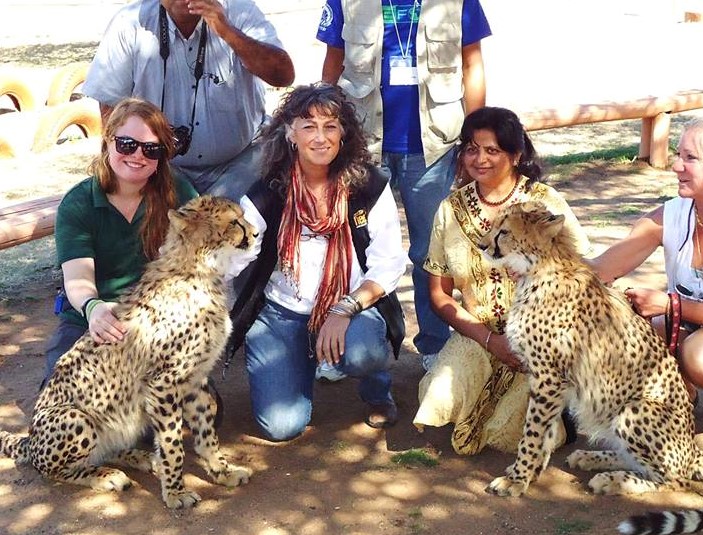Dr Pradnya Giradkar, the first cheetah conservationist in India who trained under Dr Laurie Marker, says India has a suitable environment for cheetahs.
NEW DELHI: The lost glory will be recovered in India with the introduction of cheetahs. Dr Pradnya Giradkar, the first cheetah conservationist in India who trained under Dr Laurie Marker, spoke with The Sunday Guardian about the reasons why African cheetahs might be able to adapt to the Indian habitat and how human-wildlife conflict should be avoided. Excerpts:
Q: On what scientific grounds, have three female cheetahs and two male cheetahs been selected?
A: During the reign of Akbar, we had 10,000 cheetahs, and they were hunted for several purposes, such as their skin or to hunt deer, and so forth. In 1947, the last cheetah cubs were killed. India will regain its lost glory with the reintroduction of cheetahs. We have a suitable environment for cheetahs, and if cheetahs are brought to India, then the country will have the largest number of big cats. This will boost tourism; Africa has an extreme environment (extremely hot in the morning and snowfall at night), which reflects that cheetahs can survive and adapt to any environment. I believe that cheetahs can survive better in India than in Africa. Dr Laurie Marker also travelled to India to assess the appropriate environment for cheetah survival and to mark specific areas of India for cheetah survival. Initially, the Supreme Court put a stay order on this project, stating that the cheetahs in Africa are genetically different; however, American geneticist Dr Stephen J. O’Brien stated, in his letter, that the genetic difference is almost negligible and they can survive well in our suitable environment. I sent this to the Supreme Court for a review petition, along with other documents. On this ground, the Supreme Court allowed the pilot reintroduction programme of cheetahs, and if they survive well, then the project will be carried on. We have more females who are capable of reproducing.
Q: Do you see any threats that cheetahs may face due to the presence of other animals like bears and leopards in Kuno?
A: Cheetahs will not face threats from other animals. Some have argued that cheetahs kill their own cubs, but this is the wrong theory. Tigers, leopards, and cubs do not kill their cubs; only lions do. Cheetahs are family-loving animals. Africa has three big cats—leopards, cheetahs, and lions—all living together peacefully.
Q: As an expert, when do you expect these cheetahs to mate and have offspring in the new habitat?
A: The mating of cheetahs depends on age. After two years of age, cheetahs are able to mate, and it is expected that after a year, cheetahs may have offspring. Time will tell!
Q: Many experts and wildlife enthusiasts believe that this project of introducing African cheetahs is going against natural laws. What are your views on this?
A: We all know that India has various kinds of fruits that are not originally from this country but are suitably cultivated here; similarly, migratory birds like the Siberian crane and so on can survive; if all these can survive, then why not cheetahs? Cheetahs need grasslands or shrubland to survive; the animals cannot live in tiger territory as it is surrounded by dry deciduous forests, and they cannot run very fast in such areas. These animals can live in lion territories, not tiger territories, and can well adjust to India.
Q: Do you see any factors that may lead to the failure of this project in the future?
A: For the success of this reintroduction, we need to work on the human-wildlife conflict. There may be times when cheetahs can attack cattle in nearby areas. In such cases, farmers may try to kill cheetahs. So, we must raise awareness of cheetah conservation among the villagers.
Also, only raising conservation awareness will not be effective unless their economy gets better. These villagers, if they work as local guides, canteen services, and so on, will get employment; they will not harm the cheetahs. This will prevent conflict. Also, local leaders must be empowered through advocacy and leadership, so that sustainable conservation is possible. Also, the deployment of sniffer dogs will prevent conflict, and act as protectors for cheetahs and cattle.

